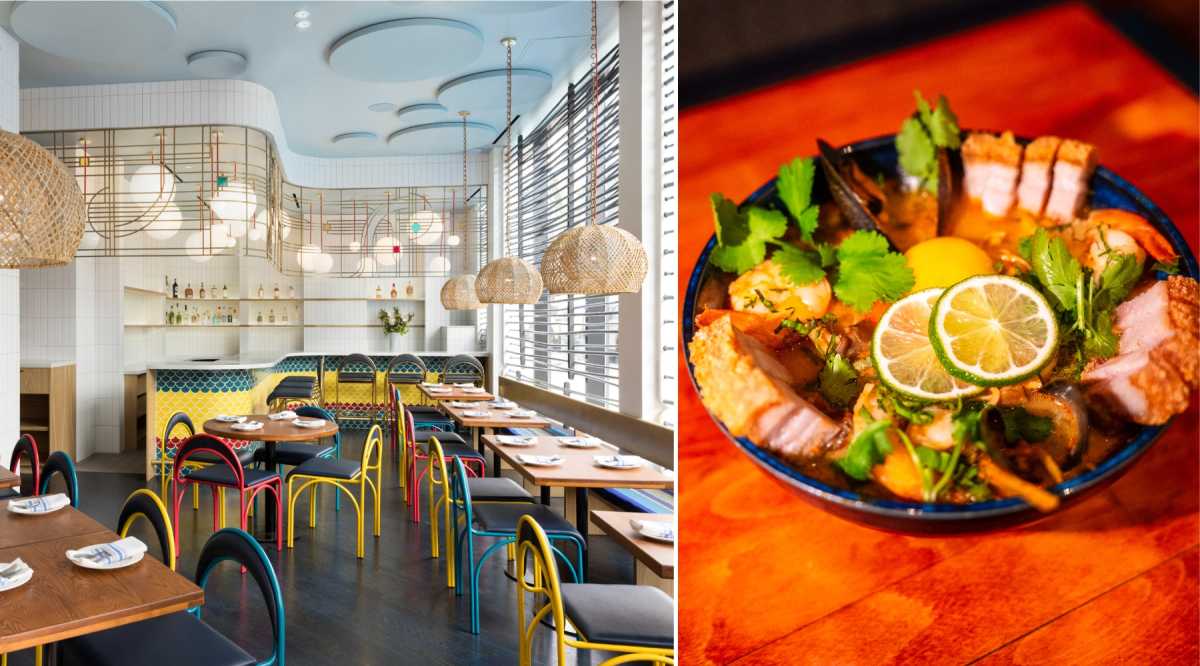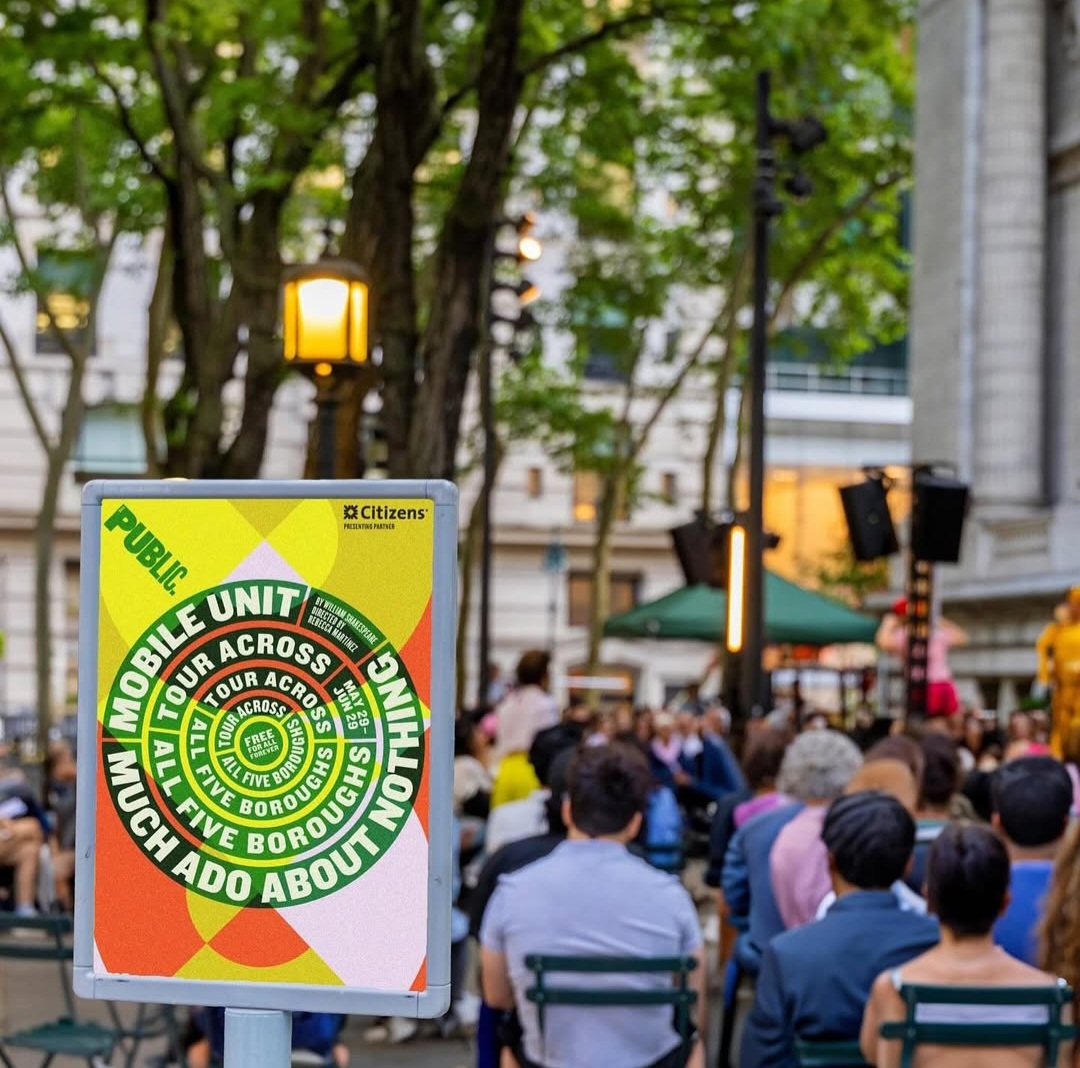
The South Street Seaport Museum’s Ambrose was the backdrop for Tartan Day festivities in March.
BY TERESE LOEB KREUZER | At Community Board 1’s Seaport Committee meeting on April 16, Jerry Gallagher, general manager of the South Street Seaport Museum, said that the museum only has enough money to carry it through the end of June. He also accused The Howard Hughes Corporation, which has a 60-year lease on much of the South Street Seaport property, of deliberately trying to put the museum out of business.
The Museum of the City of New York has been managing the Seaport Museum since 2011. Its 18-month contract expired on April 5 but was renewed for three months in order to provide one last chance to salvage the museum.
John Fratta, chairperson of Community Board 1’s Seaport Committee, said last week that he hoped the lease would be extended an additional six months so the museum could find a way to stay permanently. He pointed out that 30 years ago, the idea was for Hughes’ predecessor to provide a steady source of income to support the Seaport Museum.
The museum was on the road to curatorial and financial stability when Superstorm Sandy struck, severely damaging the electrical systems in the museum’s Fulton St. premises. The heating and cooling systems and the elevator and escalators would cost an estimated $22 million to repair.
On April 7, the museum closed its 12 Fulton St. galleries, with the intention of focusing on its properties on Water St. where Bowne Printers and Bowne & Co. Stationers are located.
“From our perspective, Howard Hughes’ actions to date signify that the museum will not likely survive and that The Howard Hughes Corporation doesn’t seem to have an interest in our survival,” Gallagher said.
He cited specific roadblocks that the corporation had erected to keeping the museum’s historic ships at Pier 16. He said that the museum had asked Howard Hughes to help support the ships, which, he said, “give authenticity to Pier 17” where the firm is about to demolish the existing mall and build another one.
However, Gallagher said David Weinreb, the Hughes C.E.O., responded that he would pay $150,000 annually for 10 years to the ships if the museum would give up its leasehold interests along Water St.
“We obviously were not asking for a trade that would benefit The Howard Hughes Corporation at the expense of the Seaport Museum,” Gallagher said. He said in a subsequent meeting with City Councilmemeber Margaret Chin and Chris Curry, senior executive vice president of Howard Hughes, Curry “was kind enough to say that he would reverse David Weinreb’s decision,” suggesting the $1.5 million offer would come without strings, “but nothing has happened with regard to that request.”
Gallagher also cited problems created for the museum by a lease dating from 1981 that was originally between the New York City Economic Development Corporation (E.D.C.) and the Rouse Company. That lease then was transferred to General Growth Properties and to its successor, Howard Hughes.
“Howard Hughes has no reason to help secure the museum’s existence because they would get the [museum’s] square footage as a matter of right under the 1981 lease after six months of vacancy,” Gallagher said. “So if the museum doesn’t utilize its spaces for six months, then by default it gets turned over to the Howard Hughes Corporation. They would acquire all of the spaces within the museum at 12 Fulton St. and also the spaces along Water Street.”
This would amount to over 80,000 square feet of space.
“Howard Hughes Corporation has twice asked my permission to walk through the spaces with one of their architects,” Gallagher told the Seaport Committee. “We’re doing everything in our power to make this work, but in fact we have close to no winning cards in our hands. It’s a very dire situation that we’re faced with.”
Curry responded that Gallagher was telling only part of the story.
“I think it’s important to note that this is primarily a negotiation between E.D.C. and the Seaport Museum,” he said. “We were brought into this because they’re our neighbor and they were asking for certain things that would impact our leasehold interests and we were clear that we wouldn’t give up our leasehold interests but we would work with them.”
Curry said that Howard Hughes had given the museum “many opportunities to work with us to figure out how to become much more visible within our program.” He went on to say that, “The issues with the South Street Seaport Museum are much too large for the Howard Hughes Corporation to solve. But we’re ready, willing and able to help in any way we can.”
Matt Viggiano, land use director for City Councilmember Chin in whose district the South Street Seaport lies, said that Chin is “dedicated to making sure that the museum remains a community asset.” He said, “We’re working very closely with E.D.C. as well as with the Department of Cultural Affairs to make that happen.”
Although no one from the E.D.C. was present at the Seaport Committee meeting, a spokesperson said in response that E.D.C. is in daily contact with the museum to address their needs. The spokesperson, Nick Kelly, also said that as the landlord, the E.D.C. is responsible for fixing building systems that are not exclusive to just one building — such as electrical systems that provide electricity for a number of tenants. Kelly said E.D.C. had fixed the electrical system and relocated it to a higher floor and had repaired the museum’s cooling and heating systems, though not obligated to do so.
In an email April 18, Susan Henshaw Jones, president of the museum, said E.D.C. had fixed the switchgear that provides electricity to the collections, which are in a building that faces John St. “Thus, we were able to turn on the chillers,” she said. “It was done this week, in fact, so the collections are fine. E.D.C. should be commended for getting the collection areas fixed up in advance of the heat and humidity. Our temporary heaters warmed them, and now the chillers will cool and de-humidify them.”
Fratta, the Seaport Committee chairperson, suggested setting up a meeting with the Hughes Corporation, the Seaport Museum and E.D.C. “so we can really get the story. We’re hearing it from you, we’re hearing it from them, and we’re hearing it from E.D.C. and nothing is making sense,” he said. “We can’t afford to lose the museum. We’ve made that very clear from day one.”
Gallagher and Curry agreed to such a meeting. The E.D.C. has said that it is always happy to talk with the community board.





































